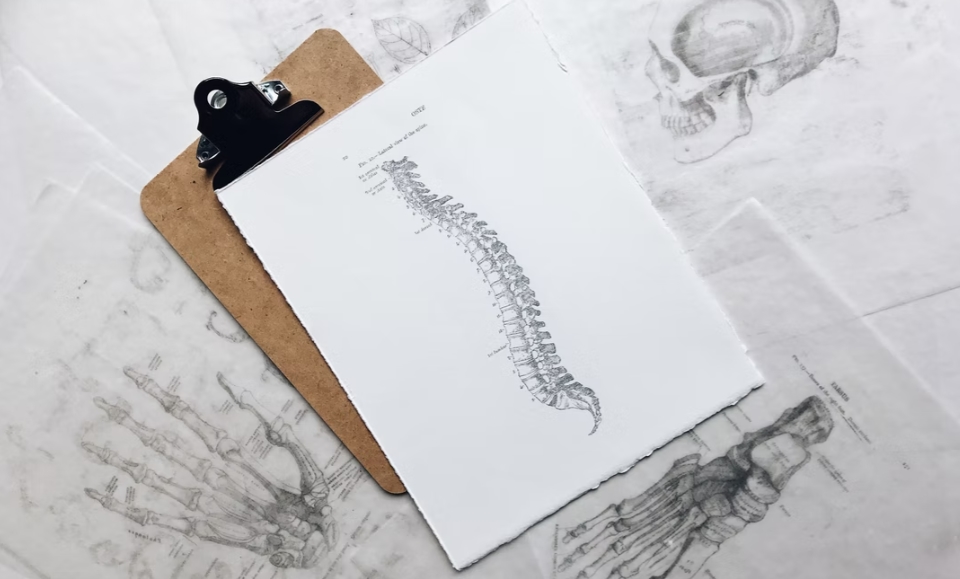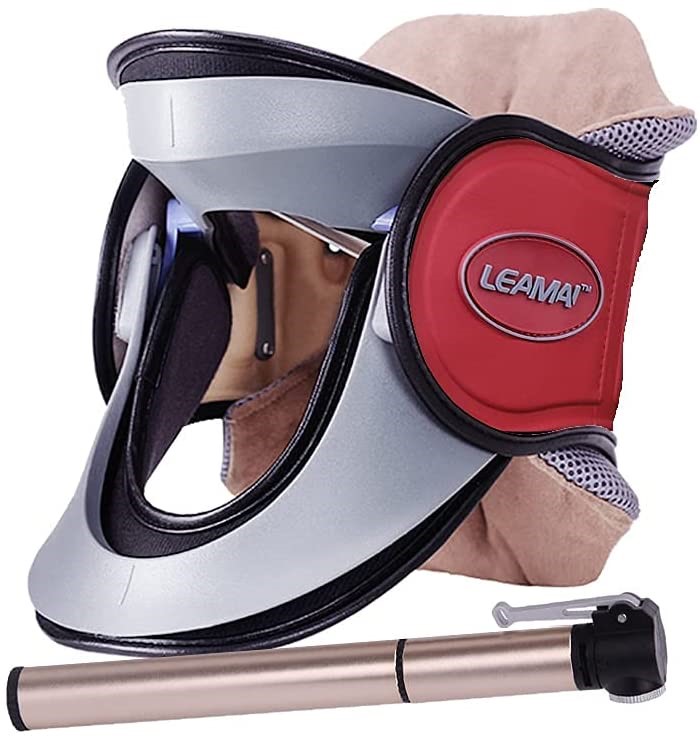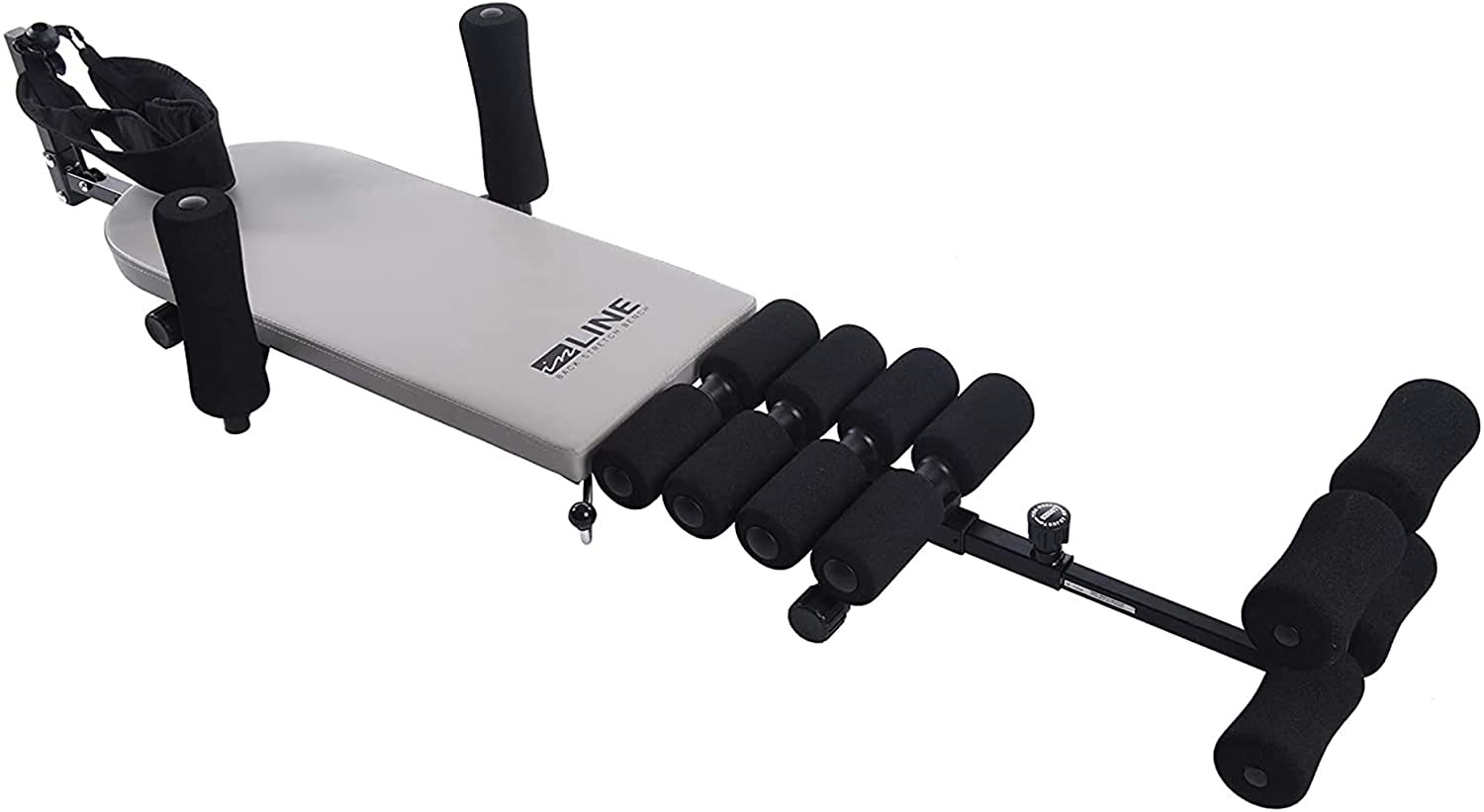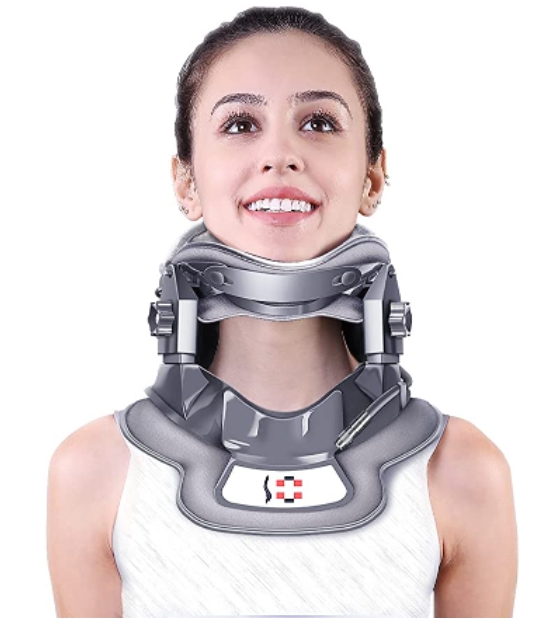Traction Devices for Back Pain Relief
Ice packs, heating pads, massage chairs, corrective braces, yoga classes, and more. There seems to be no limit in terms of what we will try (and what we will spend) to relieve back and neck pain. Studies show that billions of dollars are spent each year on back pain management and relief. This is a health problem that plagues people of all ages and backgrounds. It can be the result of an injury, genetics, poor posture, and in many cases, stress.

No matter the cause of the pain, once it is present it can have a detrimental effect on our quality of life. In some cases, back pain can simply be a nuisance; in other cases, it can be completely debilitating. Back pain is often linked to other health challenges like migraines and arthritis.
We also know that back and neck pain are often the bridge to what has become a deadly opioid epidemic, with millions affected by the dangers of prescription drug abuse, after desperately seeking relief from physical pain.
Traction (also commonly referred to as cervical traction) is a popular drug-free method to address chronic back pain. In this article we will explore what it is, how it works, and the key things you need to know before you try it. We will also highlight our favorite traction devices for back pain relief.
What is a Traction Device?
An accordion is an image that comes to mind for many when we think about spinal traction, as you picture the player expanding the bellows. With cervical traction, your head is pulled away from your neck, to reduce pressure and compression. Think of your vertebrae jammed up like a closed accordion, and traction is the process of opening them up, stretching them out, and giving them “room to breathe”.
Traction devices effectively give us an alternative to manual traction (which would be performed by a trained physical therapist). To be clear, the therapist also often uses devices, attaching a harness to your head and then using weights to create the force needed to pull your head away from your neck. In some cases, a therapist may also perform maneuvers on you using their hands.
Traction devices allow us to perform exercises at home that stretch our necks, pulling the head away and removing pressure and compression. It is a form of non surgical spinal decompression.
Now is a good time to pause and remind you that you should always discuss the use of a traction device with your healthcare providers beforehand. Certain health considerations could mean you are not a candidate for a traction device, and we will highlight those below.

Causes of Neck and Back Pain: Why You May Need a Traction Device
Many of us live our lives just one bad lift away from agonizing back pain (the phrase “lift with your knees” exists for good reason!) We hurt our backs by lifting objects that are too heavy without proper form; we damage our spines with poor posture, spending long hours hunched over screens. We can even suffer from low back pain because of our shoes.
The most common causes of back pain are:
- Injury, including pulled muscles and tendons
- Arthritis and other types of inflammation
- Osteoporosis (decreasing bone mass)
- Stress
If you are suffering from back and neck pain for any of these reasons (or for reasons not listed here) you may be a candidate for a traction device.
Traction Device Basics
The frequency, devices, weights, and force used in traction therapy will differ from patient to patient based on specific needs and concerns. This is why you should consult your healthcare provider before using any traction device on your own.
In general, most traction therapy will include:
- Weight between 7 and 10 pounds applied in half-hour increments
- Two or three repetitions in a day
The ultimate goal of traction therapy is to stretch your body so that the distance between vertebrae is lengthened. Remember the accordion image from earlier? This stretching can relieve pain in the back and neck and can also help to reduce headaches and other issues related to back pain.
The device you choose will typically fall into two categories: cervical or lumbar. Cervical devices are used for and on the neck. A lumbar traction device focuses on the lower back.
No matter what device you use, be sure to follow your healthcare provider’s instructions along with the manufacturer’s instructions carefully.
The Benefits of Traction Therapy
Many patients who suffer from chronic pain are thrilled to find relief after trying traction therapy.
One of the main things we associate with back and neck pain is a general sensation of tightness or stiffness. Traction works to effectively relieve this tension, minimizing the pain we feel in our backs and necks. The traction process relaxes our sore muscles so that the stiffness is not only minimized but a greater level of flexibility is restored.
Whenever we increase our range of motion, this can have an impact on our overall health. Simply put: if it is easier to move around, we will do it more often. By using traction to reduce or eliminate pain, we are then better equipped to get the proper exercise (and rest) our bodies need.
Cervical traction benefits may include:
- Reduced pain and stiffness
- Increased mobility and flexibility
- Treatment and healing from various neck injuries
- Relief from pinched nerves
Warnings and Potential Side Effects
Traction devices for back and neck pain are generally safe to use as long as they are (1) recommended by your healthcare provider and (2) used properly by following all instructions.
If a cervical traction device is used properly and effectively, it should not be a painful practice for patients. However, the adjustments you are making to your body by using a traction device may indeed produce some temporary reactions. You might feel somewhat dizzy or experience a headache or even nausea. This should subside quickly, and you should speak to your doctor if you are experiencing these symptoms.
Cervical traction is not appropriate for all patients. You should avoid the use of traction devices if any of the conditions or injuries below apply to you:
- Bone infection
- Cervical instability
- Fracture or another recent injury to the neck
- Hardware (screws) in the neck after a surgery
- Osteoporosis
- Pregnancy
- Rheumatoid arthritis
- Spinal hypermobility
- Tumor(s) in the neck
- Untreated high blood pressure
- Vertebral or carotid artery blockage
A traction device must be used correctly to be effective. If the device causes you pain, discontinue its use. Make sure you have used the appropriate amount of weight and that you are following the instructions and not deviating from them in any way.
Discontinue using devices any time you feel extreme pain, numbness or tingling, or any other neurological symptoms such as confusion or loss of vision.
Be mindful of the specific time limits recommended by your healthcare provider as well as the manufacturer’s guidelines. Using the device for too long could result in pain or injury. Also, you should never sleep in any cervical traction device.
Best Traction Devices
1. ComforTrac Cervical Home Traction

Dimensions: 8 x 15 x 8 inches
Weight: 7 pounds
The ComforTrac Cervical Home Traction device is one of our favorite high-end, reliable, comfortable, and easy-to-use devices.
If you are easily overwhelmed setting up devices, you can rest assured you will have no trouble with this one. The ComforTrac Cervical Home Traction device comes preassembled and ready to use, right out of the box. The controls are simple and easy to use as well, making the experience less overwhelming for those who are new to traction therapy.
To use the device, you simply lie your head into it and fasten the Velcro strap across your forehead. From there, you can adjust the traction pump according to your preference. An adjustable incline and memory foam pillow ensure you stay comfortable and pain-free while using this device, and it is also constructed of high-quality materials (such as aluminum with brass fittings) to provide long-lasting and reliable relief from pain.
Other things we love about this device are the fact that it is manufactured in the USA, comes with a convenient carrying case, and is a favorite in the world of physical therapy. The only “con” when it comes to the ComforTrac Cervical Home Traction device may be the price tag. Check with your health insurance provider to see if you have any coverage for necessary durable medical equipment (DME) or if you can use a health savings plan to cover the costs.
2. LEAMAI Cervical Traction Device

Dimensions: 8.74 x 7.44 x 6.65 inches
Weight: 1.1 pounds
We love the affordability of the LEAMAI Cervical Traction Device, but a bargain price is not the only great thing about this adjustable, inflatable collar.
With 20-degree curvature traction and a comfortable fit that adjusts to your neck, this device is a simple and lightweight tool that offers powerful relief from pain. Available in three colors (red, white, and blue), the LEMAI Cervical Traction Device is inflated with a pump, which should be used gradually and slowly to start. Users should take great care to avoid over-inflating the device when they first start using it, as a few short pumps will be enough for early treatments.
The portability factor makes this a great option for people who want a device they can take to and from work, and it can be slipped on and off easily for treatments throughout the day.
When used correctly the LEAMAI Cervical Traction device should increase the vertebral spacing and restore the healthy curvature of the spine, providing much-needed relief from tension, stiffness, and pain in the neck and back.
3. Stamina Inline Back Stretch Bench with Cervical Traction

Dimensions: 14.13 x 6.5 x 50.5 inches
Weight: 28.4 pounds
The Stamina Inline Back Stretch Bench with Cervical Traction is truly a “full service” traction device, effectively delivering traction therapy to your back and neck. The “con” here is fairly obvious: this device is not easily portable or one that you would use “on the go.” Rather, this is one option you would use only at home, but the benefits of its use outweigh its lack of portability or its larger size.
An instruction guide will help you easily assemble the bench in 20 minutes or less. Once ready to use you will lie on it and carefully place your head in the support strap and your feet into the ankle lock. The foam rollers provide a gentle massage to your legs while you move a lever back and forth to achieve spinal decompression. Foam padded arms also add to comfort during use, and the deep stretch and massage offered by this bench have users raving. It is one of our favorite devices for back and neck pain relief.
4. Makemate Cervical Neck Traction Device with 3 Power Traction + Airbag Support

Dimensions: 12 x 8.66 x 7.72 inches
Weight: 2.34 pounds
Two 15-minute sessions a day in the Makemate Cervical Neck Traction Device may be all that stands between you and your pain-free life. PET fabric around the neck makes this device comfortable and breathable, and the 20-degree upward arc thrust opens the space between vertebrae to relieve compression and pain.
A rear knob is used to adjust the circumference and side knobs adjust the height so you can ensure a personalized fit. It should be noted, however, that the device may not work for thicker necks. Measure before ordering as this will not work for a neck with a circumference greater than 17.5 inches. The average neck is around 15 inches.
The inflator connects to a valve on the device, and you should start slowly and not overinflate. Be sure to keep your head and neck straight while wearing the device, and never attempt to sleep in it.
The Makemate Cervical Neck Traction Device is one of our favorites for portable, affordable, everyday use.
Other Ways to Treat Back and Neck Pain
Cervical traction devices are one effective (and drug-free) way to treat back and neck pain, but they may not be the only solution for your particular problems. Working with a healthcare provider to address your needs, you may also be advised to try any of the following:
- A regular exercise regimen (walking is one of the best ways to address back and neck pain)
- Other devices such as soft neck braces, foam rollers, or TENS unit therapy
- Improved sleep hygiene (including replacement of poor-quality pillows or mattresses)
- Topical creams for pain relief
- A focus on improved posture in the workplace and ergonomically designed desks and chairs
- Replacing your shoes with a high-quality athletic shoe
The most important thing to bear in mind with any neck or back pain is the need to keep an open dialogue with your healthcare provider, ensuring you can determine the root cause of the pain and address it in the best possible way. The last thing you want to do while working to alleviate back or neck pain, is injure yourself or make the pain worse.
Whether you choose a cervical traction device, a new workout routine, or a medication (prescription or over the counter), make sure it is done with the guidance of a health expert who can monitor your progress and look out for any dangerous side effects.